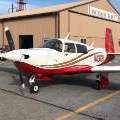Hold Brakes for Short Field Takeoff?
-
Members Online
- gtsio520
- ohdub
- PeytonM
- Fly Boomer
- Freight Dog
- DonMuncy
- Smiles201
- N201MKTurbo
- patriot3300
- redbaron1982
- Ethan
- cferr59
- Will.iam
- Jay Bird
- bigmo
- eman1200
- davesly
- Brian Coate
- Mobius708
- ToddCC22
- IvanP
- AndreiC
- Flyler
- ArtVandelay
- BlueSky247
- Abe Frowman
- 4cornerflyer
- Ivan
- Stealth Mooney
- hubcap
- jjsk784
- Mooney-Shiner
- MDMooney
- 1980Mooney
- takair
- Supereri73
- TCC
- M20F


Recommended Posts
Join the conversation
You can post now and register later. If you have an account, sign in now to post with your account.